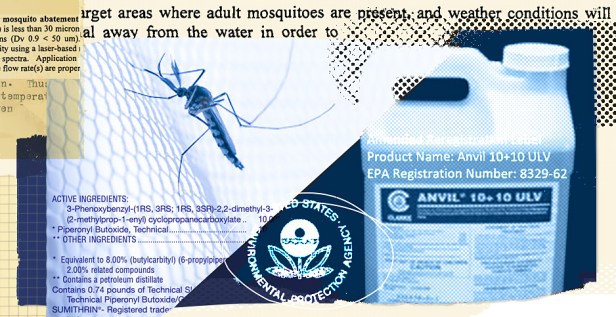PFAS in pesticides: ‘A problem of epic proportions’
By E.A. Crunden and Ariel Wittenberg | E&E News | March 5, 2021

Read the full article by E.A. Crunden and Ariel Wittenberg (E&E News)
“‘Forever chemicals’ are present in multiple common pesticides, according to new testing conducted by an environmental watchdog group and released exclusively to E&E News.
The findings, described as ‘deeply concerning,’ raise a host of public health concerns — including implications for food safety — and could trigger pressure on EPA to address the issue. The agency has faced repeated scrutiny over pesticides in the past, with the latest findings already adding fuel to the fire.
The testing done by Public Employees for Environmental Responsibility (PEER) found per- and polyfluoroalkyl substances (PFAS) — a class of chemicals tied to a wide range of health concerns, including cancer — in a handful of publicly available herbicides and insecticides.
It is unclear how the PFAS are getting into the pesticides, and whether manufacturers are intentionally adding the chemicals, as opposed to accidental contamination from equipment used to manufacture or transport the pesticides.
The tests found PFAS in Talstar P, an insecticide manufactured by FMC Corp. that kills over 75 types of pests. The company website says the product ‘is approved in multiple use-sites, so you can use it almost anywhere: indoors and out, in industrial, commercial and food-handling areas.’
The tests also found PFAS in mosquito and tick control agent Mavrik Perimeter, made by Zoecon. Initial testing revealed PFAS in at least two other pesticides, although further analysis is required to confirm those results.
The new test results follow PEER’s December discovery of PFAS in the widely used mosquito control product Anvil 10+10, which was later confirmed by EPA (Greenwire, Dec. 8, 2020).
The agency — which would not comment on PEER’s newest testing — maintains that PFAS in Anvil 10+10 came from the high-density polyethylene (HDPE) barrels used to transport the pesticides.
Today, EPA told E&E News it found eight different PFAS in barrels that carry Anvil 10+10.
The barrel tests found more PFAS compounds than PEER’s December tests found in the actual pesticide, with total levels in different-sized barrels ranging from 20 to 50 parts per billion.
Not all PFAS found in the barrels made their way into the pesticide. For example, the agency detected more than 30 ppb of the compound PFBA in 55-gallon drums, but the chemical was present at only 0.23 ppb in tests of Anvil 10+10.
Similarly, while barrel tests found 0.87 ppb of the notorious compound PFOA in the 55-gallon drums, the earlier pesticide tests found just 0.25 ppb of PFOA.
The presence of PFOA, in particular, is concerning, because the compound was discontinued by manufacturers years ago over concerns about its negative health effects.
EPA says that compound was ‘created as the result of the fluorination process.’ Generally speaking, PFOA can also be created when other PFAS break down over time, and PEER has also speculated about whether the compound could be legacy contamination of equipment used in manufacturing the barrels.
The agency did not test the barrels for a second compound — HFPO-DA — which was also found in the pesticides, at levels ranging between 0.26 and 0.5 ppb. HFPO-DA is used in the GenX process…”
This content provided by the PFAS Project.
Location:
Topics: